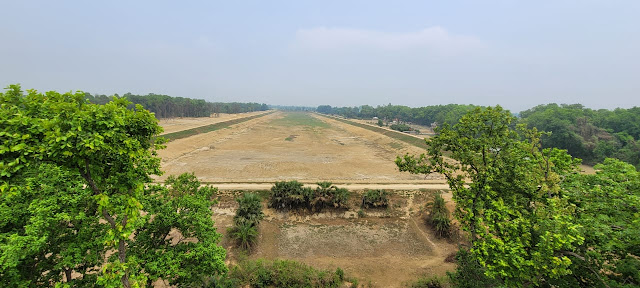Cold Wave: Boro seedbeds withering away for dense fog
Wednesday, January 13, 2010
The ongoing cold wave accompanied by dense fog has started impinging on agriculture, especially in the boro seedbeds in rice producing northern districts.
Boro seedbeds in greater Rajshahi region are turning yellowish and withering away due to severe cold while use of more pesticides and fungicides seems too ineffective in this regard.
Agriculture officials Natore, Rajshahi, Chapainawabganj and Naogaon districts are advising farmers to water seedbeds at night, cover them with polythene and use proper fertiliser.
"Boro plants suffer when the mercury dips. Those who sowed seeds late are facing problem due to the chilling weather. However, the situation is not yet alarming, as the temperature did not go below 8.5 degrees Celsius in last five days," said Dipendra Mohon Saha, crop production specialist of Rajshahi officials of Department of Agricultural Extension (DAE).
While visiting Mohonpur upazila, this correspondent found Golam Rasul watering his seedbed at Kalitala of Sabai Beel.
"We are watering seedbeds everyday as the soil absorbs water fast. But most of the plants are turning yellowish and bronze colour. Then they die," he said.
Ten farmers prepared seedbeds on two bighas of land at Dhuroil village but most of the plants have been damaged due to the cold wave.
"I sprayed pesticides and fungicides six times in last 20 days to save my seedbed from cold. But the paddy plants are still dying," said Jewel Rana.
Nazrul Islam, Mohonpur upazila agriculture officer, said, "Out of 500 hectares of paddy seedbeds in the upazila about two hectares are affected by cold. We are distributing leaflets among the farmers through mosques, union councils, clubs and meetings, telling farmers the ways to protect seedbeds from cold."
Several farmers of Mohonpur, Bagmara, Tanore and Godagari upazilas told this correspondent that they are yet to get any DAE leaflet or advice regarding protection of seedbeds from cold.
This season the farmers prepared boro seedbeds on at least 4,375 hectares of land in Rajshahi while boro can be cultivated on 20 times larger areas of lands.
The DAE fixed its cultivation target on 84,000 hectares of land against last year's target of 85,000 hectares in the area.
http://www.thedailystar.net/newDesign/news-details.php?nid=121641


Comments
Post a Comment